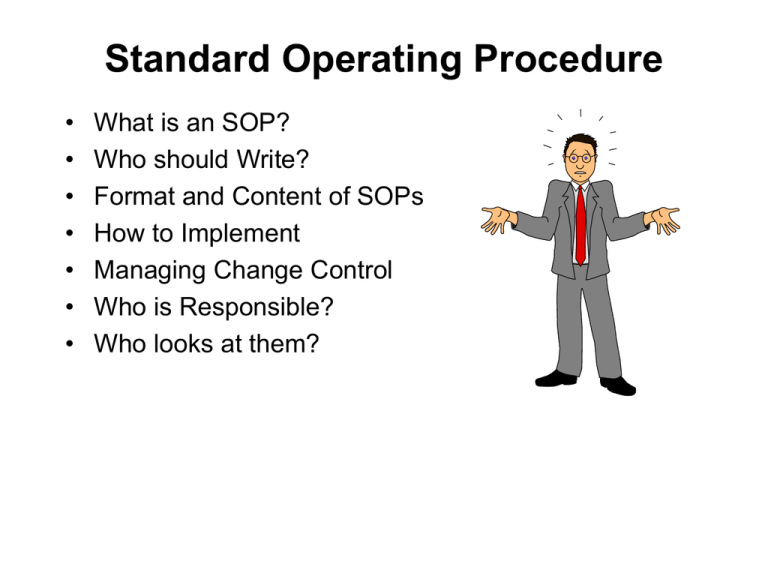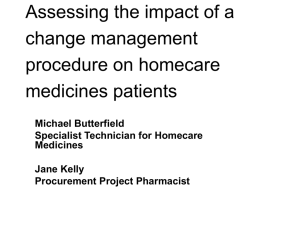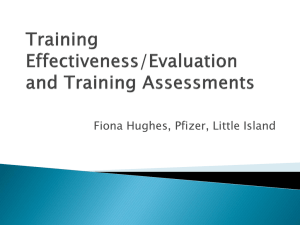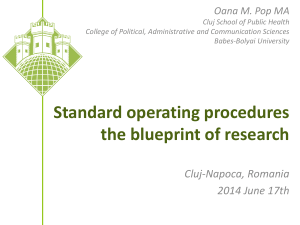Standard Operating Procedure
advertisement

Standard Operating Procedure • • • • • • • What is an SOP? Who should Write? Format and Content of SOPs How to Implement Managing Change Control Who is Responsible? Who looks at them? Standard Operating Procedures (a.k.a. SOPs) • Documents that describe a specific procedure in detail • Living documents that represent current practice • Official documents that can be used in court. Signed approvals indicate responsibility. • FDA requirement as stated in the drug cGMPs (CFR 21 Parts 210 & 211) 2 In fact . . . • SOPs are mentioned 23 times in the drug GMPs – “There shall be written procedures . . . “ – “Such written procedure shall be followed . .“ 3 SOP’s are important because • They provide a written record of a specific procedure • They can be used as a training tool • They provide the FDA with evidence that company is in control of there procedure & processes • They make good business sense 4 When do you need to write an SOP? • GMP regulations specify some instances. However, additional procedure relating to the development and/or manufacture of drug products should also be in SOP format • SOPs are not intended to restrict experimental activities in the product development process 5 Getting Started . . . • Identify individual or group responsible for the process • Agree on a format (template) and or process for review, approval, and distribution of the documents (write an SOP for SOP’s) • Identify procedures to be written • Assign writing responsibilities to appropriate individuals • Review and solicit comments as needed until the document is acceptable 6 SOP Format • • • • Header Body Footer Attachments 7 SOP Header • • • • Title SOP Number (XXX-YYY-ZZ) Effective Date Approvals (document, control, writer, manager/supervisor, QA or GMP coordinator) • Other information 8 SOP Body • Purpose – the reason for writing the SOP • Scope – the limitations of the procedure • Responsibility – positions responsible for specific parts of the procedure • Procedure – step by step instructions • Documentation – necessary to support the procedure 9 SOP Footer/Attachments • The SOP must be paginated • Attachments – part of the SOP or separate? 10 Tips . . . • Write clearly and concisely avoiding excessive detail • Avoid using jargon unless absolutely necessary • Watch grammar and spelling – use of shall, will, should, can • Be careful referencing other SOPs • Be careful with attachments and forms 11 Maintaining SOPs • • • • Document Specialist Quality Assurance/Quality Control Change control Availability and distributions of copies – Paper copies – Electronic copies • Training • Periodic Review • Archiving 12 Finally . . . • It is a concern if an SOP is not in place • It is a violation if a SOP is in place but not followed • Map out what you need to accomplish • Set realistic goals for writing/prioritize • Utilize learning from other areas • Assess the quality and relevance of SOPs 13











